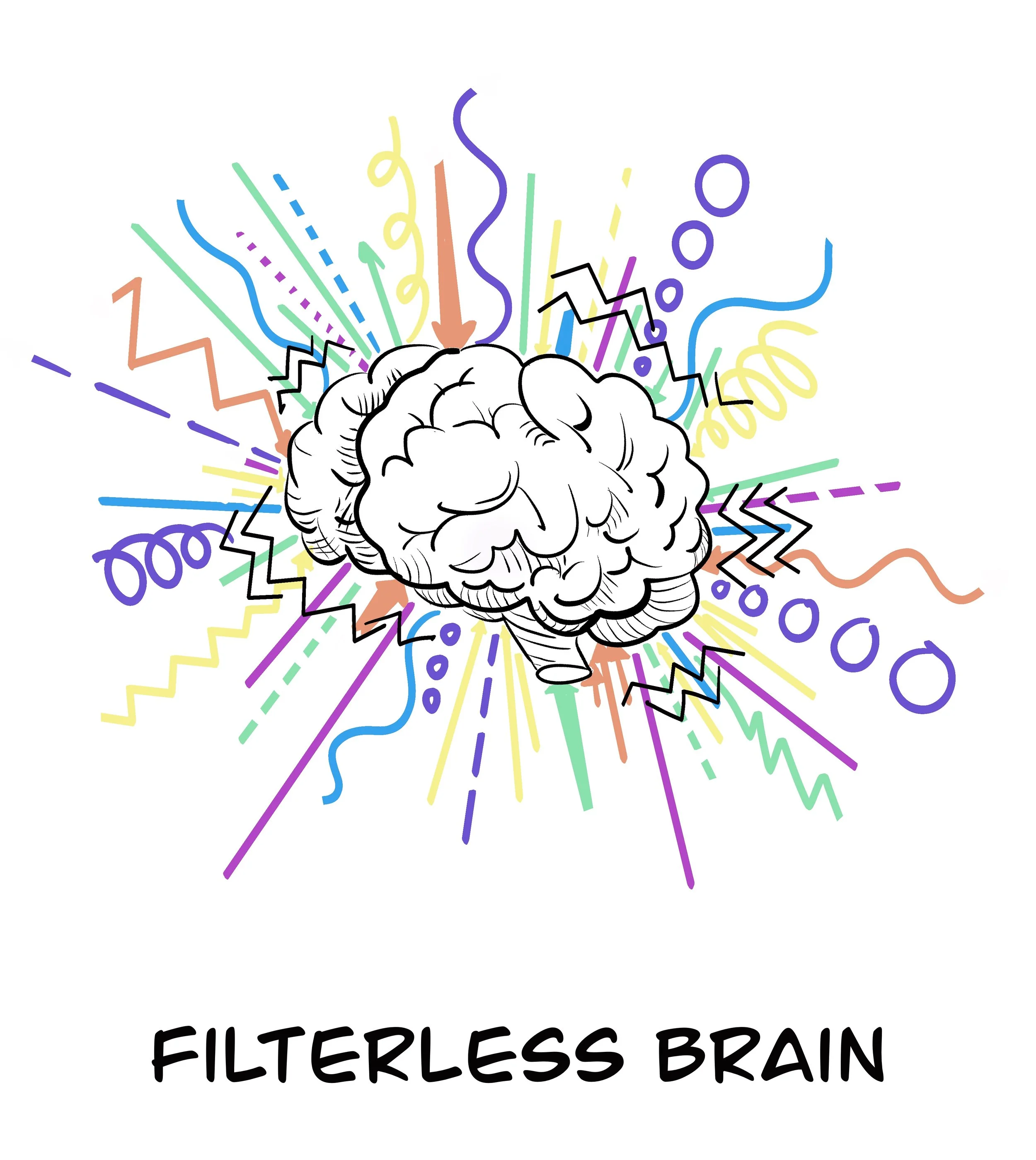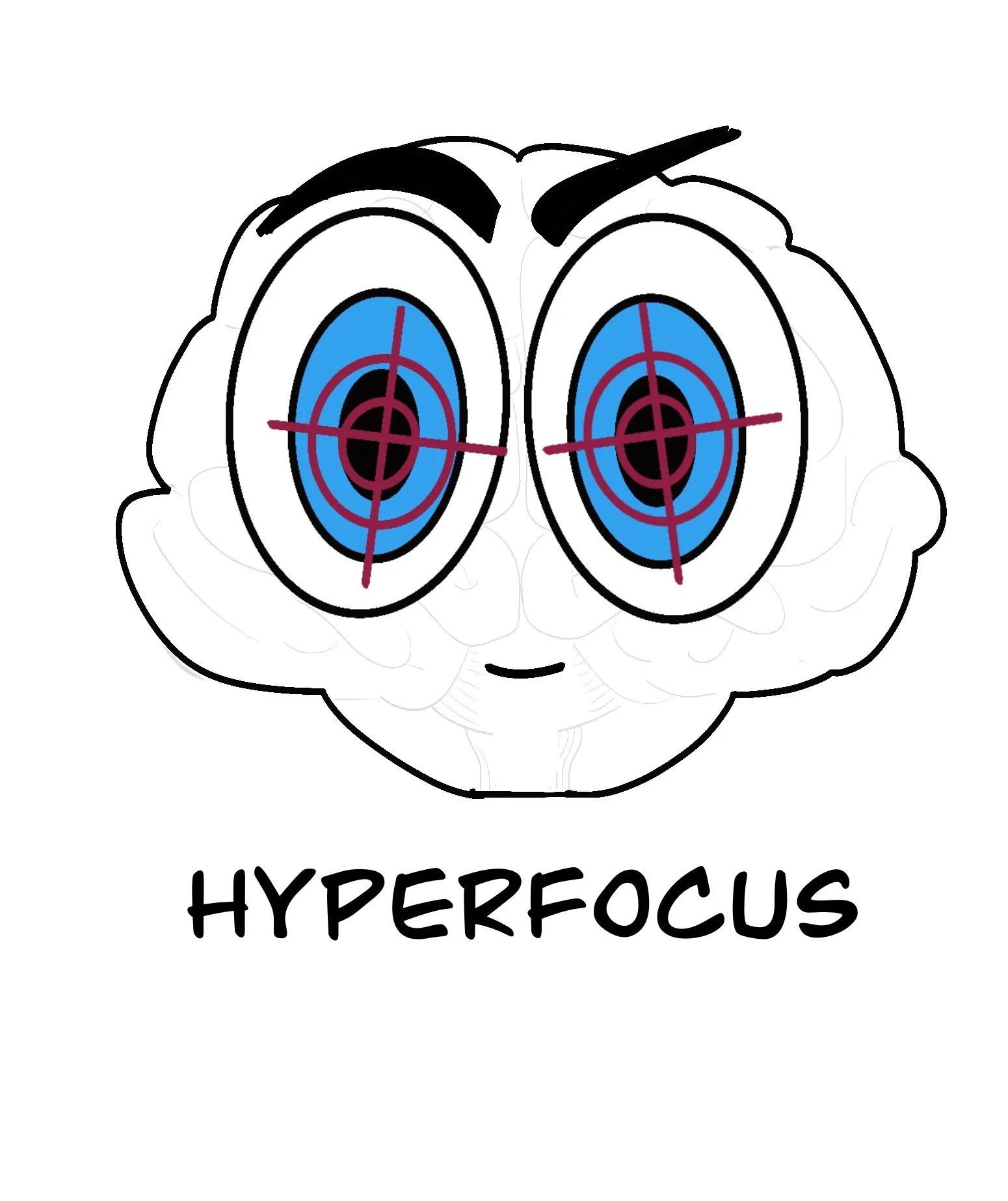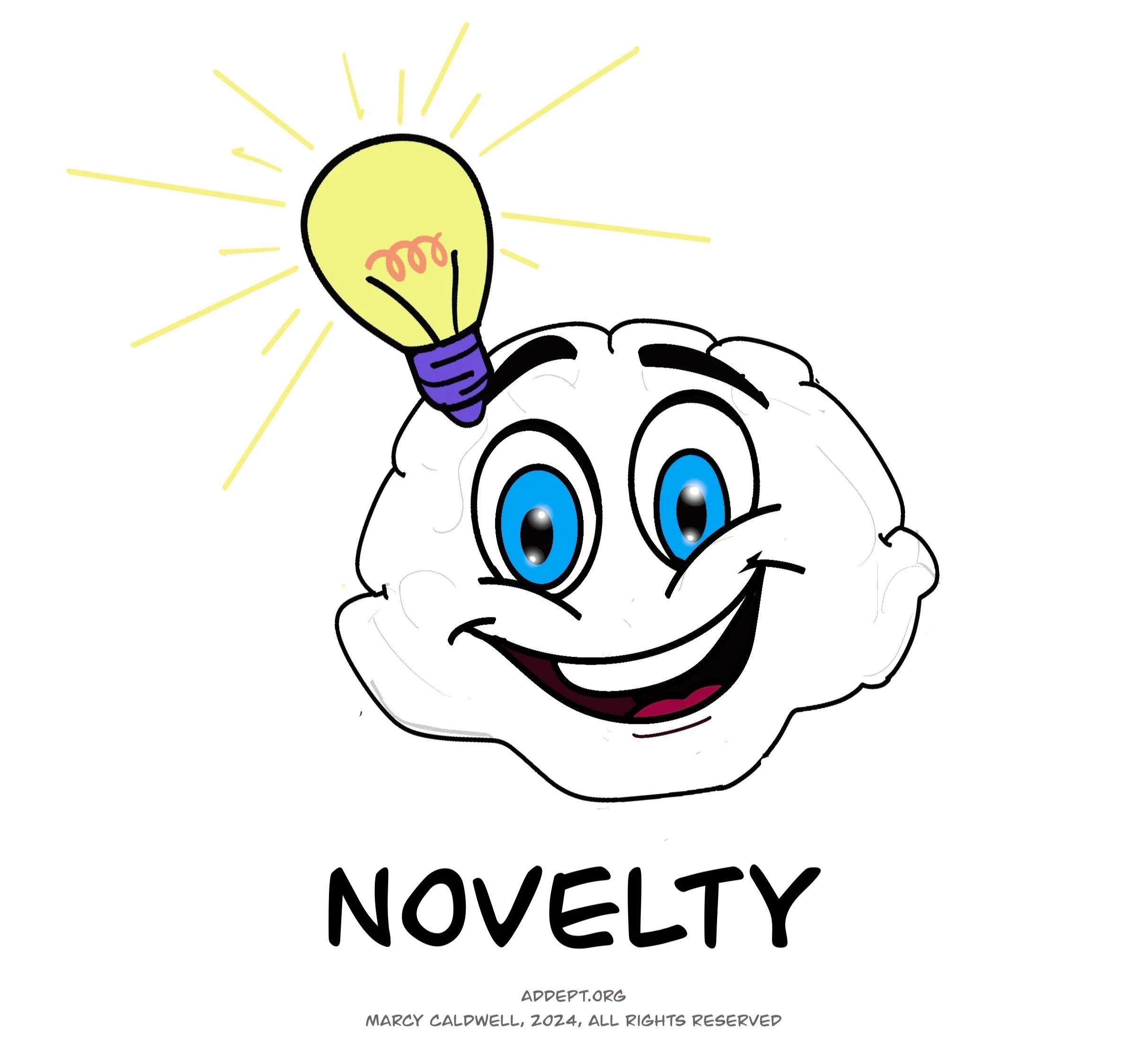Wired for Creative Inspiration:
How ADHD Brains Fuel Divergent Thinking
ADHD brains are more likely to be creative, largely fueled by their capacity and drive for divergent thinking. This can be a great strength and has been found to be particularly useful when part of a team but like all strengths, has it’s vulnerbilities as well that need to be managed.
Embracing the Creative Strengths of ADHD for a Thriving Life
One of the more painful parts of the ADHD experience is the frequent refrain of: “you’re too much”— Ugh! Even writing it, is like nails on a chalkboard.
The message of this excruciating refrain is clear: we’re too distracted, too forgetful, too scattered, too intense, too random, or too emotional.
And it’s all really unfair.
But what if these so-called “flaws” are actually part of our secret box of powers? What if all these things that people see as “too much” are actually the fuel of our brain’s greatest strengths?
Well, buckle up—because we’re exploring how ADHD and all of our too-much-itude might be the secret recipe for unparalleled creativity and divergent thinking.
What’s the deal with ADHD and creativity?
Are ADHD brains more creative? As if we even need to ask!
Anyone who has found themselves leaping from bright idea to bright idea will answer this with a firm “Heck yes!”. Living with ADHD often feels like having a supercharged brain that's constantly buzzing with new thoughts—and those thoughts are often highly original.
While this flood of ideas can feel like drowning in a sea so deep it’s hard to sort through the individual drops; it’s also a recipe for amazing creativity. In fact, being creative, imaginative, and an original thinker can all be seen as one of the super-special strengths of ADHD brains. So, let's explore how to unlock the creative potential of our particular super-special brand of neurodiversity.
What is creativity?
First, let’s just be clear on what we mean by ‘creativity’—because we’re not just talking about playing the piccolo, designing psychedelic sun hats, or performing contemporary dance in the middle of a forest glade.
No, creative thinking can help us to succeed in many areas of life.
In fact, research shows that ADHD brains have a big impact on fields like engineering [1], business, design, marketing, and the arts due to their propensity for creative, unconventional thinking [2]
But why?
Divergent thinking and ADHD
First, let’s debunk a myth—ADHD isn’t just about hyperactivity or differences in focus. It’s about how our particular, sparkly brains process information. ADHD’s unique processing style is a gateway to creativity because it’s wired to think outside the box—way outside the box.
This phenomenon (this inclination to push beyond those cardboard walls) is known as divergent thinking, and it’s a well-documented strength of ADHD brains.
What is Divergent thinking?
Psychologists define divergent thinking as a cognitive style that involves generating many different ideas or solutions from a single point. It’s the opposite of convergent thinking, which narrows multiple ideas into one solution.
Divergent thinkers are also great at abstract thinking and making connections that others might not see. Because of all this unconventional thinking and connection-making, it’s not surprising that many of the world’s innovative solutions and groundbreaking ideas have come from divergent thought processes.
Think: the Post-it note, Velcro, and the Dyson vacuum.
In a nutshell, ADHD creates different patterns of connectivity in the brain, enhancing the ability to make novel associations and think divergently. Both, of course, are crucial for creativity.
ADHD, creativity, and the Brain
Why are ADHD brains so good at creativity?
Divergent thinking isn’t the only ADHD brain bonus that fuels its creativity power. ADHD brains are also linked to a range of other cognitive tendencies that positively influence creativity.
So, let’s explore the many aspects of ADHD brains that make them such creative powerhouses.
1. Wandering Attention:
While it might seem like a drawback, having a brain that’s easily distracted and jumps from one thing to the next, like a TV playing 100 channels all at the same time, means that ADHD brains are open to more information, ideas, and sensations. This allows ADHD brains to make unexpected connections between disparate things and come up with novel ideas [3].
2. Filterlessness:
ADHD brains are filterless brains. What does that mean? Well, they don’t filter out extraneous information (be that sensory info, other ideas, or just a passing question). And all that extra stimuli means that there are more options for creative connections and inspiration- things others would overlook.
3. Hyperfocus:
ADHD brains are prone to hyperfocus,-- leading to a deep, intense exploration of ideas––particularly those that contain one or all five of the following motivating factors: novelty, competition, interest, humor, or pressure. This, in turn, can fuel huge creative output [4]
4. Drive for Novelty:
Dopamine plays a crucial role in the brain’s reward and motivation systems. Because ADHD brains are often dopamine-hungry, they search for novel and stimulating experiences to boost their levels. This quest creates not just an openness to new ideas and experiences but a relentless thirst for them and all the creative inspiration and magic they can bring.
The pitfalls of creativity and ADHD
Of course, it’s not all sunshine, rainbows, and technicolor murals. The same ADHD traits that fuel creativity can also lead to challenges with day-to-day functions, such as:
Feeling overwhelmed by ideas:
With thoughts racing through our brains, like Road Runner on a donut rush, it can be hard to focus on just one long enough to make a plan, let alone see it through to fruition. This can lead to unfinished projects (ugh!) and endless frustration (double ugh!!).
Being/ feeling disorganized:
Having a brain that loves to come up with new ideas but is somewhat repelled by having to choose just one can lead to a lot of disorganization. And having a lot of great and brilliant ideas without the structure to implement them? Well, it can make us feel hopelessly disorganized (and so we’re back to the Ugh!).
Challenges with emotional regulation:
High levels of creativity often come with intense emotions. And we all know how hard it is to manage intense emotions! Not only do these intense emotions often feel overwhelming and painful, but they can also interfere with our productivity and relationships, making it even harder to enact all those creative ideas!
Dealing with procrastination:
Let’s face it: ADHD and procrastination go together and create as much trouble as Bonnie and Clyde. And creativity is a piece of that! All that divergent thinking that feels so good and can create such gems?!? Well. they can also be a fantastic distraction from the stuff that really needs to get done (anyone else feels the sudden need to research all the possible ways to organize your sock drawer the minute you sit down to finish tomorrow’s quarterly report?!?) So, while the ADHD brain might have brilliant creative ideas, it might also have a hard time starting and finishing projects.
Harnessing creativity with ADHD
ADHD is a different brain chemistry that, yes, leads to a whole lot of frustration but also can lead to incredible creativity and innovation. The trick is harnessing our neurodiversity, celebrating and capitalizing on our strengths, and building systems and strategies that help make up for our vulnerabilities.
10 tips for harnessing creativity with ADHD
So, what’s an ADHD brain to do? How can we harness our creative powers while managing the many challenges that come with them? The truth is finding the secret recipe that works for takes some trial and error and almost certainly will evolve and change over time. But here are ten practical tips to help you get started:
1. Embrace divergent thinking: Don’t shy away from the gift of unique thinking. But also, don’t let all the brilliance dissolve into the ether when it’s all done. Instead, use the many tools available to you, like mind maps, brainstorming sessions, and recording devices, to capture all your great (and not-so-great) ideas.
2. Set clear goals: I know, I know—you’ve heard it a thousand times. But there is great power in it. Breaking down projects into smaller, more manageable tasks with clear (REAL) deadlines can help us stay on track and avoid feeling overwhelmed.
3. Create a dedicated creative space: A clutter-free, dedicated space for creative work can help minimize external distractions, particularly when utilized in tandem with internet-free times. Yup! Another one that’s easier said than done! (here are some tips for ADHD-friendly strategies for cleaning up) But it’s worth the effort because it can lead to more time and space for your own brain’s brilliance (and a few squirrels that happen by).
4. Embrace technology: Sure, it’s a minefield, but it’s also a treasure trove of external organizational tools! Apps like Trello or Asana can keep projects right on track and help you bring that creative brilliance to fruition.
5. Practice mindfulness: Techniques such as meditation can help manage stress and improve focus. An endlessly useful tool to grab when feeling overwhelmed by ideas.
6. Build a routine: Daily routines can provide structure and help with organization by reserving precious energy and executive functioning resources. This doesn’t mean stifling creativity—instead, think of it as creating a safe framework for creativity to flourish.
7. Team up for success! Collaborating with focused partners isn't just about camaraderie and support—it's a game-changer that can bring your ideas to life- particularly when you pair with people whose skills balance yours- so grab a couple of convergent thinkers and invite them to the party to help focus the flood and get you into motion!
8. Recharge for brilliance: Give your brain the downtime it craves with regular, restorative (REAL) breaks. Experimenting with the best length and cadence for work breaks can be your secret weapon for maximizing focus and preventing burnout.
9. Get expert guidance: Partner with a coach or therapist who gets ADHD. They can equip you with personalized strategies to unleash your creative genius and conquer any obstacles. How do you find this kind of magical guide that actually understands your brain? Check out 5 questions to ask before starting ADHD treatment.
10. Celebrate every win: Acknowledge and revel in your creative triumphs, big or small. Each victory fuels your confidence and ignites the drive to tackle even bigger challenges
Join the conversation! What’s your relationship with creativity? Do you think ADHD makes you more creative? Post a comment below and tell us about it.
Ready to shift from
meltdown to mastery?
This online course has been designed specifically to help teach the strategies ADHD brains need to help them move from overwhelm and meltdowns to confident emotional mastery.
-
Taylor, C. L., Zaghi, A. E., Kaufman, J. C., Reis, S. M., & Renzulli, J. S. (2020). Divergent thinking and academic performance of students with attention deficit hyperactivity disorder characteristics in engineering. Journal of Engineering Education, 109(2), 213-229. https://doi.org/10.1002/jee.20310
Verheul, I., Block, J., Burmeister‐Lamp, K., Thurik, R., Tiemeier, H., & Turturea, R. (2015). Adhd-like behavior and entrepreneurial intentions. Small Business Economics, 45(1), 85-101. https://doi.org/10.1007/s11187-015-9642-4
Barkley RA. Behavioral inhibition sustained attention, and executive functions: constructing a unifying theory of ADHD. Psychol Bull. 1997 Jan;121(1):65-94. doi: 10.1037/0033-2909.121.1.65. PMID: 9000892.
Mahdi S, Viljoen M, Massuti R, Selb M, Almodayfer O, Karande S, de Vries PJ, Rohde L, Bölte S. An international qualitative study of ability and disability in ADHD using the WHO-ICF framework. Eur Child Adolesc Psychiatry. 2017 Oct;26(10):1219-1231. doi: 10.1007/s00787-017-0983-1. Epub 2017 Mar 28. PMID: 28353182; PMCID: PMC5610225.
Want to know more about
thriving with ADHD?
Check out these other articles:












Always bright and often bewildering: Twice exceptional adults with ADHD